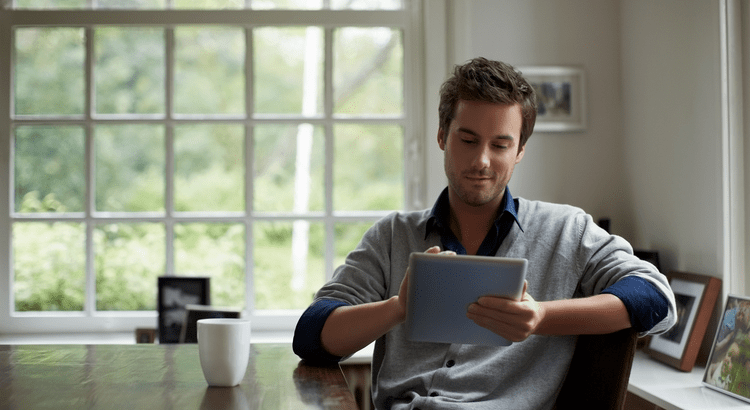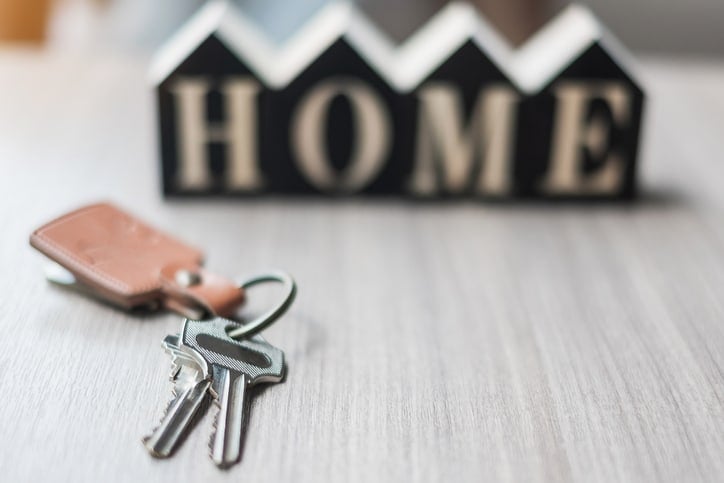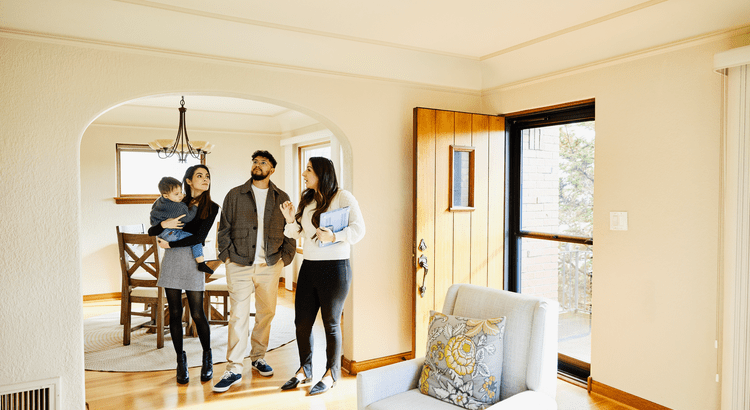Forget Screen Time, This Is The True Threat To Gen Alpha
Forbes August 7, 2025
Lifestyle

Forbes August 7, 2025
Lifestyle

While all eyes are on mobile phones as the greatest threat to our youth’s wellbeing, a bigger threat to childhood might be unfolding just beyond the glow of those screens. Across the globe, we’re raising a generation that is less physically active, less mobile, and less confident in their bodies than ever before.
In the United States, only 20-28% of kids between ages 6 and 17 meet the CDC’s recommendation of 60 minutes of daily physical activity. Globally, the situation is even more dire, with over 80% of adolescents not getting enough exercise, according to the World Health Organization. Despite decades of awareness campaigns, public investment, and school initiatives, the needle has barely moved.
The consequences ripple out beyond rising obesity or declining cardiovascular health. Lower levels of childhood movement are linked to decreased executive function, poorer mental health, reduced school performance, and higher rates of social isolation. In short, we’re quietly undermining an entire generation that will soon find itself struggling not only with their physical well-being, but with the confidence and competence that comes from mastering their own bodies, all in the era of AI that is already making it more difficult for humans to compete.
If we want to raise kids who move, we need to build environments that make movement feel rewarding, natural, and most of all, fun. It is not enough to tell children to go outside or scold them for spending too much time online. The same goes for simply taking away their cellphones, even if Jonathan Haidt has made a wonderful case for doing so.
Instead, we need to offer meaningful incentives that meet them, and move them, where they are.
That’s the idea behind WeWard, a free mobile app that turns walking into a rewarding experience. “When we gamify movement, teenagers suddenly care,” says Yves Benchimol, WeWard’s founder and CEO in an interview. “Across our user base, daily movement jumps by 24 percent once rewards kick in.”
Clearly the carrot approach is working, given how one of WeWard’s fastest-growing user segments has been among teens and young adults who never saw themselves as “active.” According to Benchimol, “The magic doesn’t come from collecting points or the gamification alone. The social proof of it all is incredibly important as well. When you’re competing with your friends and building healthier habits through community, that’s a powerful shift in mindset.”
He’s particularly passionate about closing mobility equity gaps with methods that pull, instead of push, and he also reminds us of the importance of access to options to move.
“There’s a turbo fitness culture these days that promotes rigid diets and expensive workout routines that not everyone can afford,” Benchimol says. “A healthy lifestyle is something that everyone should have access to in a way that isn’t intimidating or extreme. That’s why we chose to focus on walking—it’s a simple but powerful movement that’s incredibly overlooked. Educating the youth on these benefits will be key to wellness reform”
What Benchimol is highlighting ties to a growing trend where treating physical activity not as a personal virtue, but as a public good that needs private solutions and education to play a larger role.
If we want more movement, we need to design for it on all sides of the economy. That includes smart incentives, but also the resources and tools to make movement easy.
Kids find the joy in mobility early, if only we allow it.
For many kids, a love of motion starts the moment they ride their first bike. But fewer and fewer are reaching that milestone, in large part given that we simply don’t have access to spaces, or equipment to move the way previous generations did.
Perhaps the most striking statistic comes from something as simple as riding a bike. According to Strider Bikes founder Ryan McFarland during our interview, “Only about a quarter of kids in the U.S. can ride a bike by the time they’re six. We used to take it for granted. Now, it’s the exception.”
Seeing these statistics play out firsthand is part of the reason McFarland created the Strider balance bike to begin with. After watching his own son struggle on traditional learn-to-ride toys that were too cumbersome and complicated, he crafted his own pedal-less starter bike designed to teach balance and confidence before introducing propulsion. “Balance first, propulsion later. The moment a toddler glides, you’ve banked a lifetime of confidence,” McFarland says.
Recognizing the challenge accessibility poses, McFarland has pushed the company to do more than simply build bikes. The Strider Education Foundation helped launch and now supports All Kids Bike, a nonprofit initiative that puts balance bikes directly into public school kindergarten PE classes. Their turnkey program includes bikes, helmets, curriculum, and teacher training, all funded by donors.
“With over 1,600 active programs in all 50 states, we’re reaching 160,000 five-year-olds every year,” says Lisa Weyer, executive director of All Kids Bike. “And because the equipment lasts up to a decade, we are teaching over 1.6 million kids how to ride.”
The appeal to schools is clear: the program fits seamlessly into existing curriculum, doesn’t require families to buy their own equipment, and provides measurable outcomes. “We treat bikes the way we treat books or microscopes,” Weyer explains. “Bikes shouldn’t feel like luxury items. They’re essential learning tools and the pathway to a lifetime of mobility.”
Both Weyer and McFarland see mobility as a justice issue. “You don’t get to build confidence if you never get the chance to try,” says McFarland. “That’s why we focus on public schools, especially in communities where bikes might be out of reach.”
When we break down the barriers of accessibility by removing cost barriers, creating access, and integrating movement into daily routines, kids naturally take to it in ways that show the issue is not due to a lack of interest in movement. Quite the contrary.
However, there’s another piece of the puzzle: adults modeling the behavior they wan’t to see in the youth.
Those who have been around kids know that they model what we do, not what we say.
If kids are watching us, and they always are, then they need to see adults enjoying movement, not avoiding it. Given the only race most kids see their parents run is of the rat variety, we have ourselves to blame for much of the lack of movement we see in our progeny.
Bringing back movement that is fun to our own lives is an essential starting point that we can’t shut our eyes from. And that’s where companies like Onewheel come in.
“The idea for Onewheel was inspired by the desire to recreate the feeling of freedom and flow that I first fell in love with growing up snowboarding in the Canadian Rockies,” says Kyle Doerksen, founder of Onewheel, a self-balancing electric board that feels like surfing on land. “It was never meant to be a toy, but a vehicle that could create a whole new category of sport, and turn the everyday school or coffee run into a micro-adventure.”
What began as a Kickstarter project in 2014 has grown into a global community with riders in 139 countries around the world and an active scene of meetups, group rides, and competitions. “People love to ride together, and we see a lot of parents and older kids who ride together too,” Doerksen adds. “There’s this deep nostalgia for the kind of play we had as kids, exploration, speed, freedom, that I think sometimes we as adults forgot was possible.”
The company’s latest board is itself a nostalgic nod to the past, the Onewheel XR Classic, a reimagined version of its best-selling board, the discontinued Onewheel XR.
Doerksen argues that micromobility is at its core a cultural shift. “When parents ride to the park instead of driving, when they try and fail and laugh and try again, kids notice. Adults need recess, too.”
By making movement aspirational for grown-ups, Onewheel has created a feedback loop: adults who play raise kids who move. And when that loop becomes normal, the next generation doesn’t need to be coaxed off the couch.
We can’t lecture our way out of the youth mobility crisis. What we can do is make moving irresistible.
That means more carrots, rewards, recognition, community, and fewer sticks. It means embedding equipment and encouragement where kids already are: schools, parks, city blocks. It means showing them that movement is normal, joyful, and for everyone.
Above all, it means treating mobility not as a side effect of good parenting or elite schooling, but as a basic ingredient in a thriving childhood.
The bodies of the next generation are already telling us what they need. Our job is to listen, and get them moving.
Stay up to date on the latest real estate trends.

Buyer
August 29, 2025
You may have seen talk online that new home inventory is at its highest level since the crash.

Buyer
August 29, 2025
It’s not unusual for designers to use their own homes as a mad laboratory, fiddling with new materials, half-baked ideas, and “could this work?

Lifestyle
August 28, 2025
It just happens that one of the most accessible and budget-friendly forms of exercise is also the most beneficial for your health: walking.

Seller
August 28, 2025
Now that the market is slowing down, homeowners who haven’t sold at the price they were hoping for are increasingly pulling their homes off the market.

Buyer
August 26, 2025
Sales of new single-family houses in July were at a seasonally adjusted annual rate of 652,000, according to estimates released jointly today by the US Census Bureau a… Read more

Buyer
August 26, 2025
If you’re still worried about having to deal with a bidding war when you buy a home, you may be able to let some of that fear go.
We Guide Homeowners through the complicated process of selling their home using our 4 Phase Selling Process and 3 Prong Marketing Strategy that alleviates their stress and moves them effortlessly to their next destination. Schedule a 15 Minute Complimentary Strategy Session Today